Universal Studios Escape
Universal’s second gate was, by all accounts, a marvel. Meeting and even exceeding Disney’s standards in the era, Universal had assembled a world-class collection of intellectual properties, constructed some of the most technologically advanced theme park rides on Earth, and had wrapped it all in a package as beautifully detailed and landscaped as anything Disney had done.
Thoughtful, musical, whimsical, legendary, and adventurous, the park seemed like a surefire hit, and just the thing to put Universal on the map as a real contender in Orlando’s family market. The brand new theme park appeared ready to roll. So then why was Islands of Adventure the least-attended theme park in Orlando for years after its opening?
Simple: Universal botched the marketing campaign.
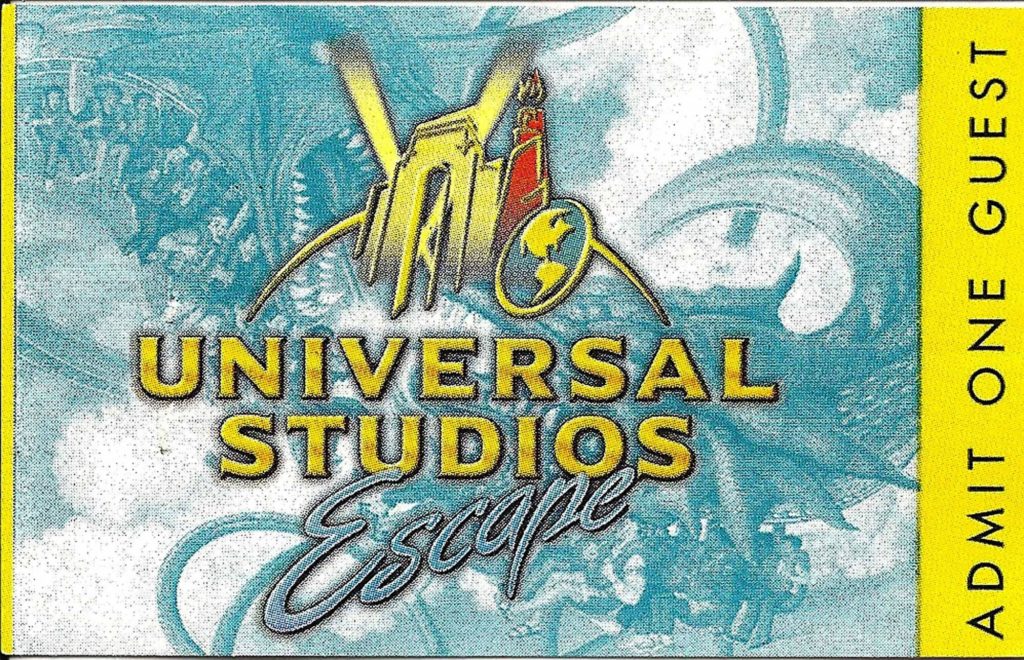
In March 1998, Universal began an aggressive rebranding around its Orlando property. When you think about it, Univesal’s transformation from a single theme park with a blacktop parking lot into a multi-park, multi-day, multi-hotel resort destination simply hadn’t happened before. (Disney Parks in Anaheim and Tokyo wouldn’t expand till 2001; Paris until 2002.) So how do you communicate that change to potential guests?
The entire property would henceforth become Universal Studios Escape.
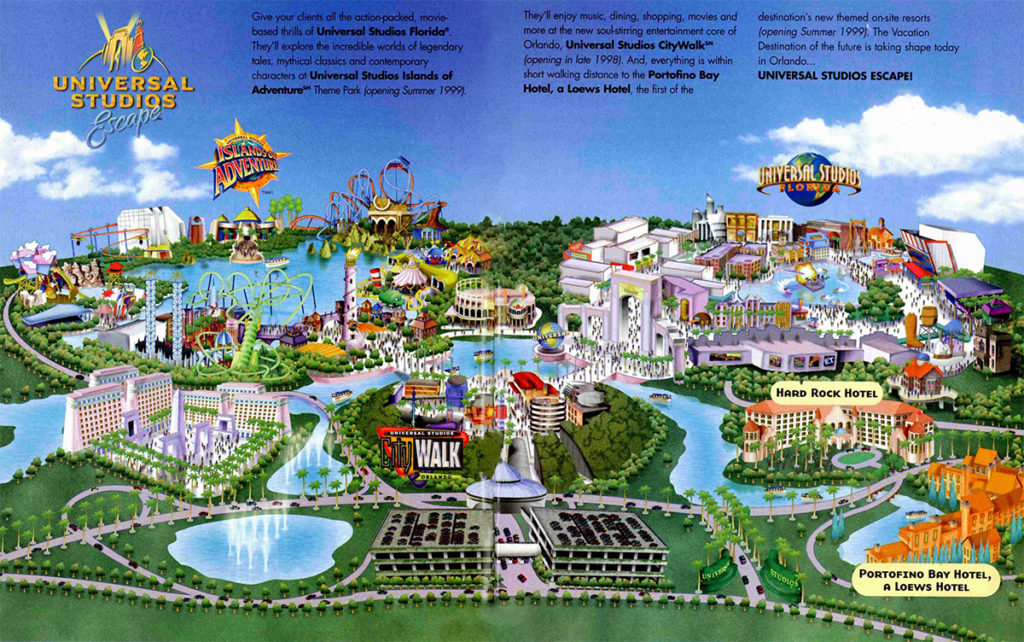
Univesal Studios Escape would now contain Universal Studios Florida and Universal Studios Islands of Adventure, joined by the new Universal Studios CityWalk. While industry fans understood the differentiation between the property’s various “Universal Studioses,” the public did not.
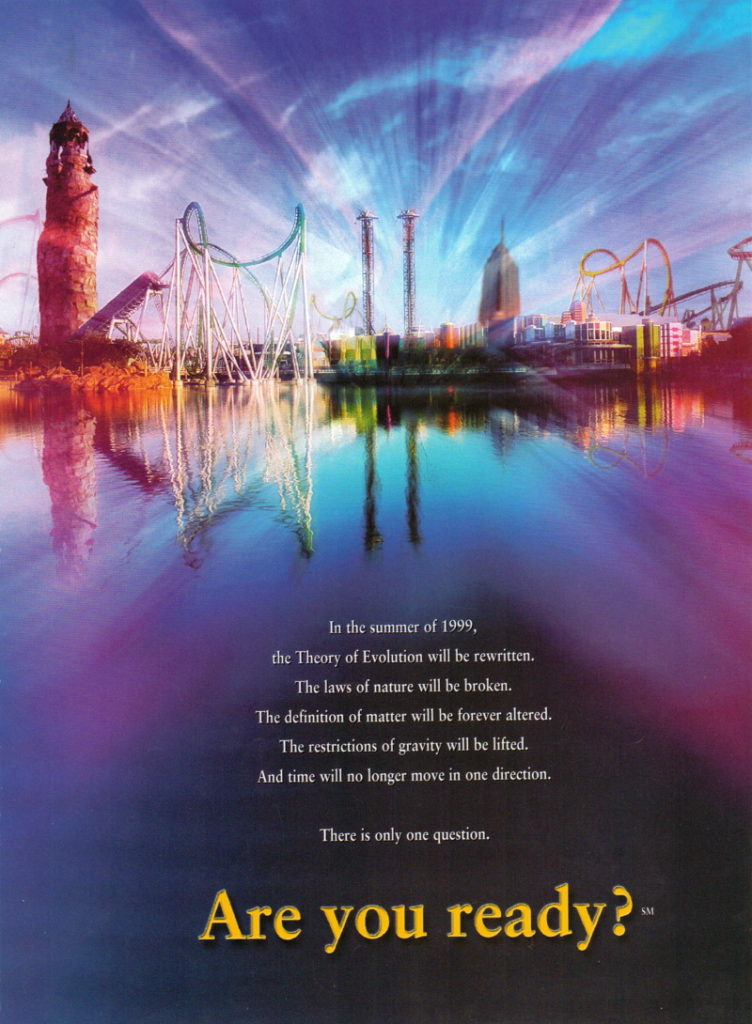
What was Universal Studios Islands of Adventure? A new ride? A new show? A water park? A new “land”? Consider it the HBOGo, HBONow, HBOMAX dilemma. Who’s got the time and energy to figure it out? Instead, Universal’s odd and intentionally ambiguous marketing (see above) failed to explain that they’d constructed a whole new theme park and turned their property into what we’d now call a “Resort.” Islands of Adventure’s attendence was spectacularly low.
In June 2000, Tim Barker of the Orlando Sentinal wrote UNIVERSAL COMPLEX SEEKS TO ‘ESCAPE’ NAME CONFUSION. They’d settled on the property’s umbrella as Universal Orlando, containing Universal Studios Florida and the renamed Universal’s Islands of Adventure. (Think about it – if Universal hadn’t learned this naming convention through the “school of hard knocks,” we might’ve had Disneyland joined by Disneyland California Adventure as part of Disneyland California!)

Even then, we know that Islands of Adventure was still not given its due credit until the opening of the Wizarding World of Harry Potter opened in 2010 and re-catapulted the park – at last – into international headlines.
Vol. 3-D
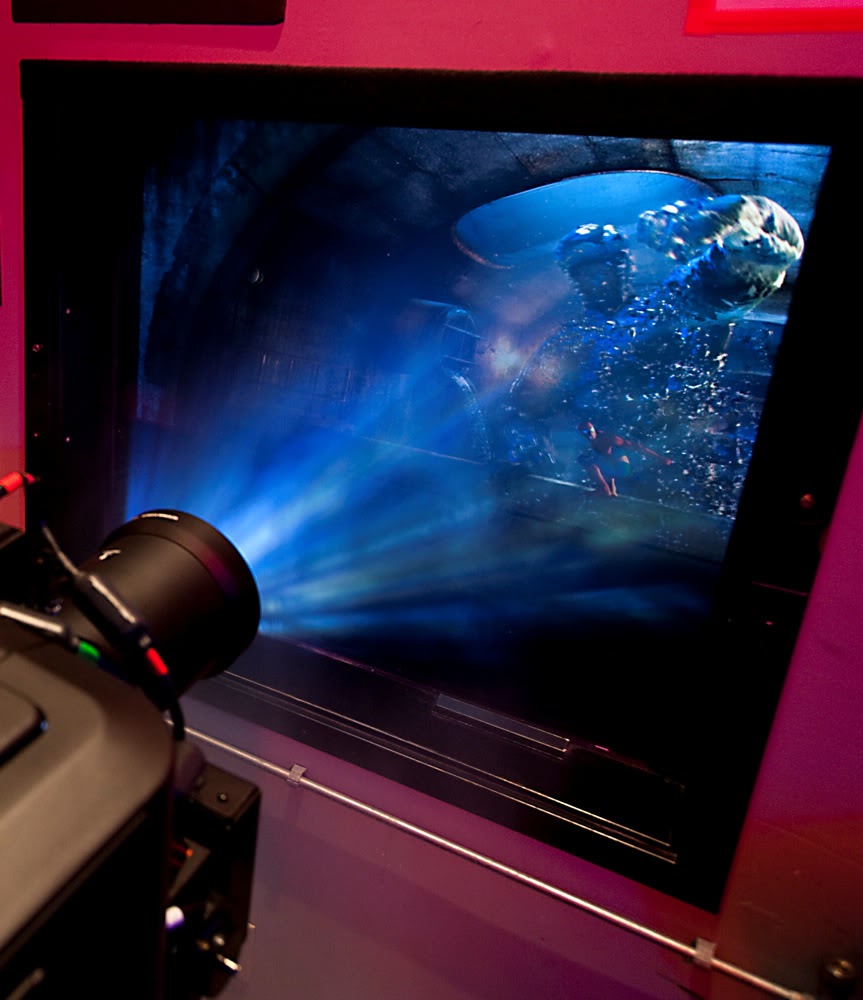
Even after Potter’s debut drew roves of new guests to Universal Orlando, Universal seemed to recognize that keeping them would require more than just the Wizarding World be in top shape. So on May 19, 2011 (a week shy of the park’s 12th birthday), Universal announced a major refurbishment that would re-master the Amazing Adventures of Spider-Man in high definition.
Any media-based attraction (of which, in part thanks to Spider-Man, there are now plenty) will need period upgrades to stay fresh, up-to-date, and relevant. In Spider-Man’s case, the film projectors would be replaced with Infitec digital projectors, and the ride would receive a new audio system, new lighting, and set upgrades.

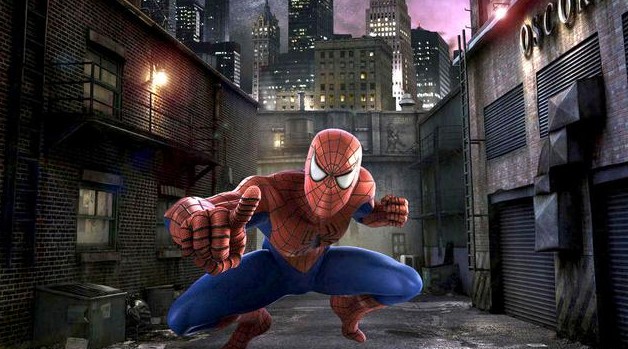
Here’s the thing: when the Amazing Adventures of Spider-Man re-opened on March 8, 2012, it was brand spanking new. The spectacular fan-favorite had been completely revitalized. More than just new hardware or a “refining” of the original ride, every single animated scene was re-animated from scratch, adding immense detail and realism with vivid color. While it still feels as if you’ve stepped into a living comic book world, now there’s appropriate depth and texture, looking a lot less like a ’90s cartoon.
Spider-Man looks better today than it did in 1999. Its upgrade is the sincere definition of a “plus,” super-charging the ride for another generation and ensuring it remains a marvel for all. The video and images we presented in our ride-through are all of the upgraded 2012 ride. You can see a side-by-side look at the original 1999 ride and the 2012 updated version here:
Getting the SCOOP(s)
The technology that powers Spider-Man – the roving, motion-based 3D dark ride that’s often simply called a SCOOP – was a wonder, shaking the industry. Never before could projections, physical sets, and motion co-exist in a physical ride space to such a degree. And as you might imagine from such a stellar new precedent, the success of Spider-Man’s SCOOP application is often imitated, but never duplicated…
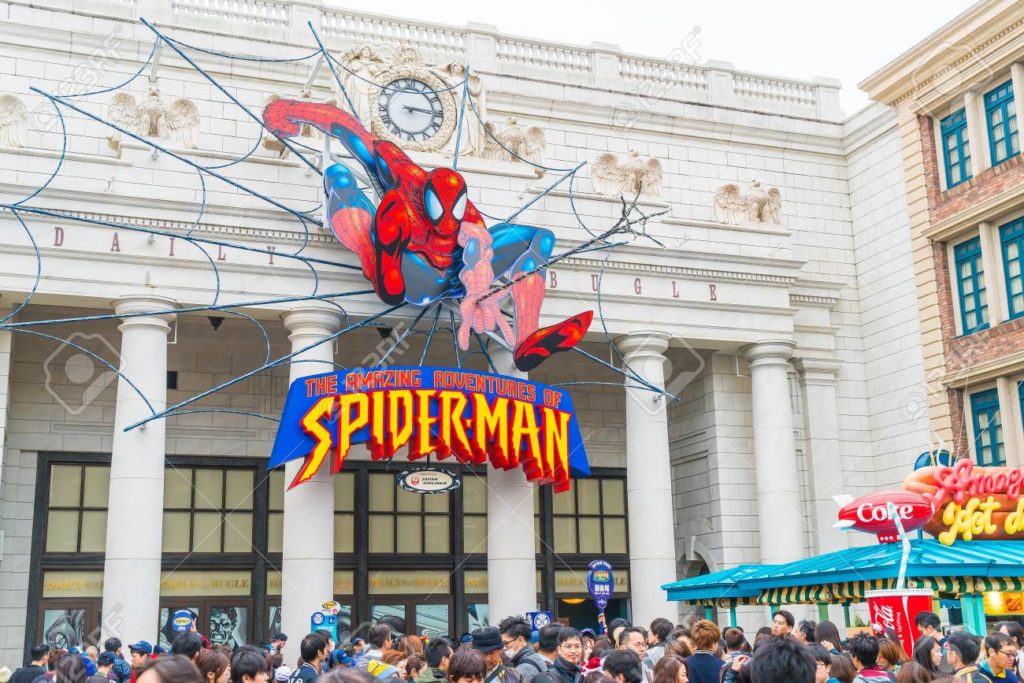
…Er, duplicated once. In January 2004, Universal Studios Japan opened its own Amazing Adventures of Spider-Man in the park’s New York (located behind the facade American fans know as the Museum of Antiquities home of the Modern Marvel: Revenge of the Mummy and, before that, the Penn Station departure point for the dearly departed Lost Legend: Kongfrontation). The ride is identical to Orlando’s but for its Japanese-language dubbing. Japan’s Spider-Man received the same 4K upgrade in 2013.
Most surprisingly, the technology’s next application wasn’t at Universal, Disney, or any other global destination park. Instead, it appeared at the regional, seasonal park Busch Gardens Williamsburg, whose themed lands are hamlets dedicated to European countries and the food, dance, stories, and legends of “the Old Country.”
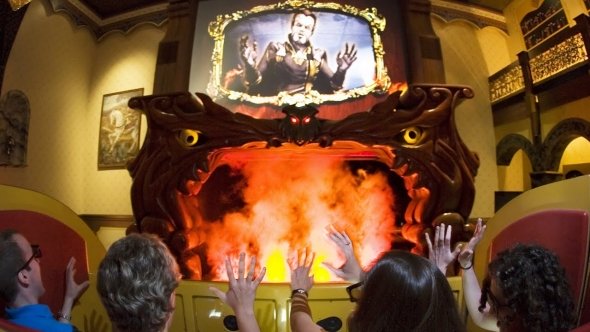
There, the German-set Lost Legend: Curse of DarKastle was – in the loosest terms – a haunted house. The ride recast the SCOOPS as golden sleighs carrying us through the frozen grounds and haunted halls of mad King Ludwig’s castle – frozen in time – as his mother’s spirit tries to save us, break the curse, and end her son’s reign of terror at last.
The ride system was used again in Abu Dhabi Ferrari World’s Speed of Magic ride (though to less creative success) and on the anime-stylized Tokyo Panic Cruise at the Tokyo Dome City indoor park.
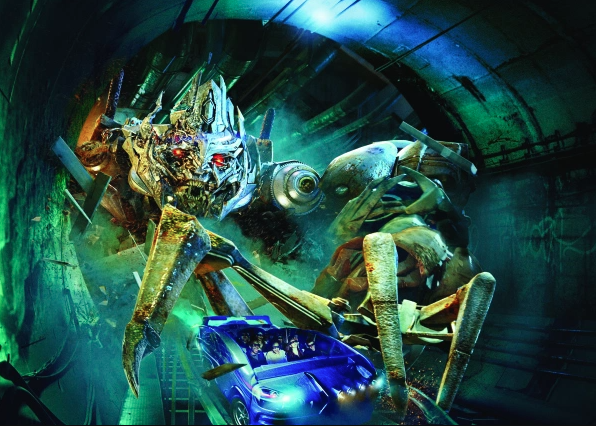
In 2011, the SCOOP style technology was used on the new Transformers – The Ride at Universal Studios Singapore, based on the Transformers film franchise by Michael Bay. On board, the SCOOP was themed as a Transformer named EVAC that guests ride in as they race to save the life-giving AllSpark from the hands of the Decepticons desperate for its power. Interestingly, Transformers – The Ride is two stories, with EVAC carried via a concealed elevator to a second level so effectively, most riders don’t even notice.
Given the ride’s success (and the moratorium on Marvel west of the Mississippi), Transformers then made its way to Universal Studios Hollywood in 2012. Most surprisingly, the SCOOP came full-circle when Transformers was duplicated a third time at Universal Studios Florida, giving Universal Orlando two SCOOP-based dark rides.
As clever as each reinvention has been, few would argue that any subsequent installation is better than the original Amazing Adventures of Spider-Man.
Technological tet-a-tet
In 1995, Indiana Jones Adventure: Temple of the Forbidden Eye upped the ante for themed entertainment design and ride system engineering.
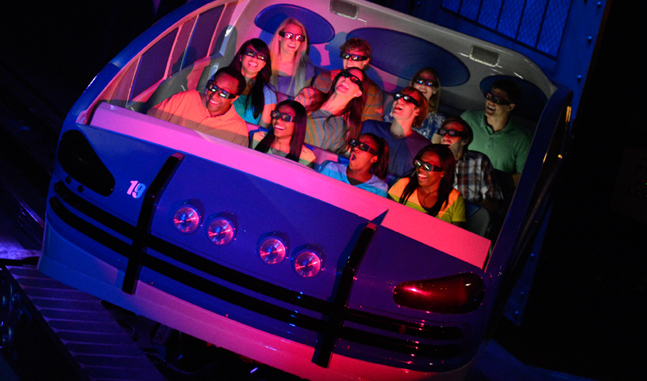
In 1999, Universal stole back to the crown with The Amazing Adventures of Spider-Man. To this day, it remains cutting edge and astounding in its complexity, and in the effectiveness of the illusions it presents. The ride system feels both current and timeless… a tremendous credit to the innovators who made it possible.
As a testament to its brilliance, the SCOOP made our countdown of the Seven Modern Wonders of the Theme Park World, too, earning an immortalized spot alongside the Omnimover and the EMV that spurred its creation!
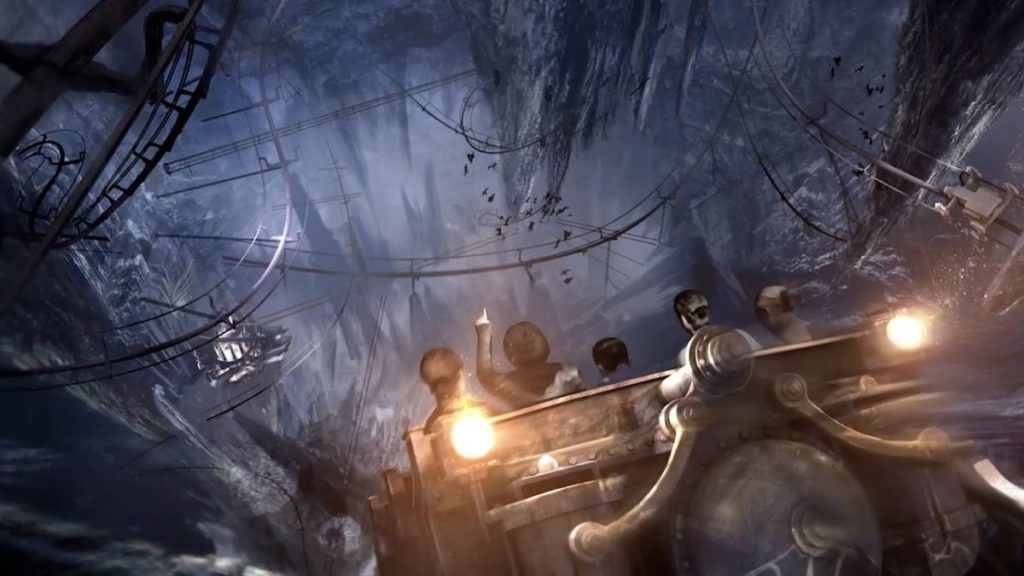
While Universal doubled down on the SCOOP and the “squinching” animatinon techniques of Spider-Man (seen again in Transformers, Reign of Kong, and Harry Potter and the Escape from Gringotts), Disney Imagineering bet big on a different “next gen” ride system.

In fact, Disney’s answer to the SCOOP seems to have been their LPS (local positioning system) trackless dark rides, using RFID embeds or Wifi to coordinate the precise and dazzling movement of multiple vehicles at once. The best of those trackless dark rides feel like natural evolutions of the pattern Universal’s Spider-Man started: high-action, surprising, and often intermingling media with physical sets.
The Amazing Adventures of Spider-Man ran away with our “2000s” category nomination for The Best Ride of Each Decade, and it’s easy to see why: almost every headliner that’s come since owes some amount of its DNA to Spider-Man. This new take on an IP-based simulator redefined the technological and media limits of rides, jump-starting a new race between Disney and Universal whose products we’re still benefitting from to this day.

New technology allows Disney and Universal to trade friendly punches, pushing the envelope and the industry with subsequent installations. Every year, the limits we thought we knew stretch. More seamless integration; more high-definition; more motion; more immersion. We can’t begin to think of what “cutting edge” rides may debut a decade from today, using technology that hasn’t even been imagined yet.
One thing we do know? Even as technology races forward, rides like The Amazing Adventures of Spider-Man remain favorites. These Modern Marvels are at once cutting-edge and timeless, still inspiring awe in riders. That’s a sign of quality, and one of the reasons we inducted Spider-Man into our new series early.

Thank you so much for reading. Now, it’s your turn to join the story. If you enjoy spending time falling down the “rabbit hole” of Park Lore’s in-depth, ad-free, member-supported stories, consider becoming a Member for as little as $2 / month.
Members can unlock rare concept art in every tale, reveal attraction audio streams in select stories, gain access to over a hundred exclusive articles in our quick-read Extra Features and in-depth Special Features collections, gain exclusive podcast extras, and receive an annual member card and merch in the mail! (Plus, y’know, supporting research-based, ad-free, clickbait-free, in-depth theme park writing!)
And that’s where you come in – are you amazed by the Amazing Adventures of Spider-Man? Does this spectacular dark ride still convince you that you’re racing through a comic book? Does your stomach still drop when you freefall 400-feet? What in the world could engineers be dreaming of next? What other “Modern Marvels” deserve in-depth looks in our new selection of stories?


